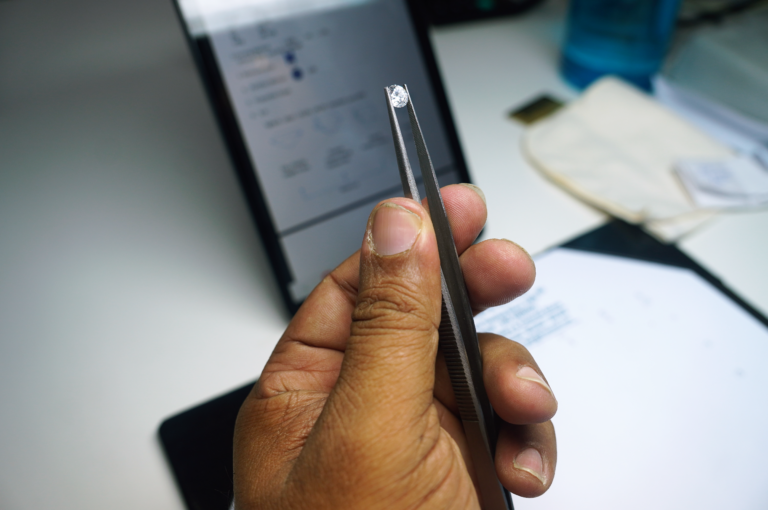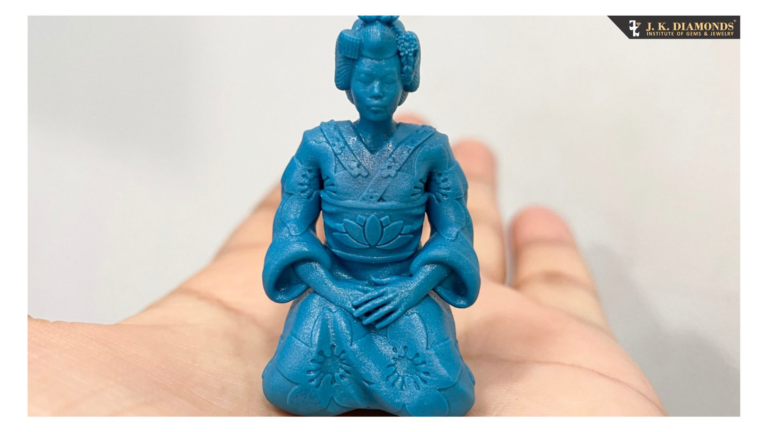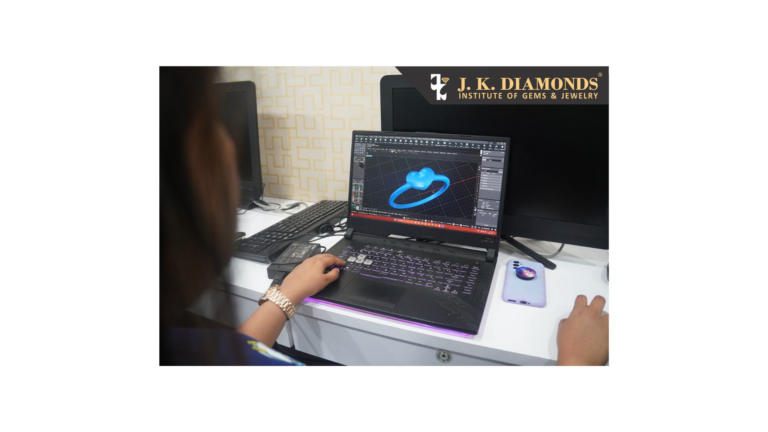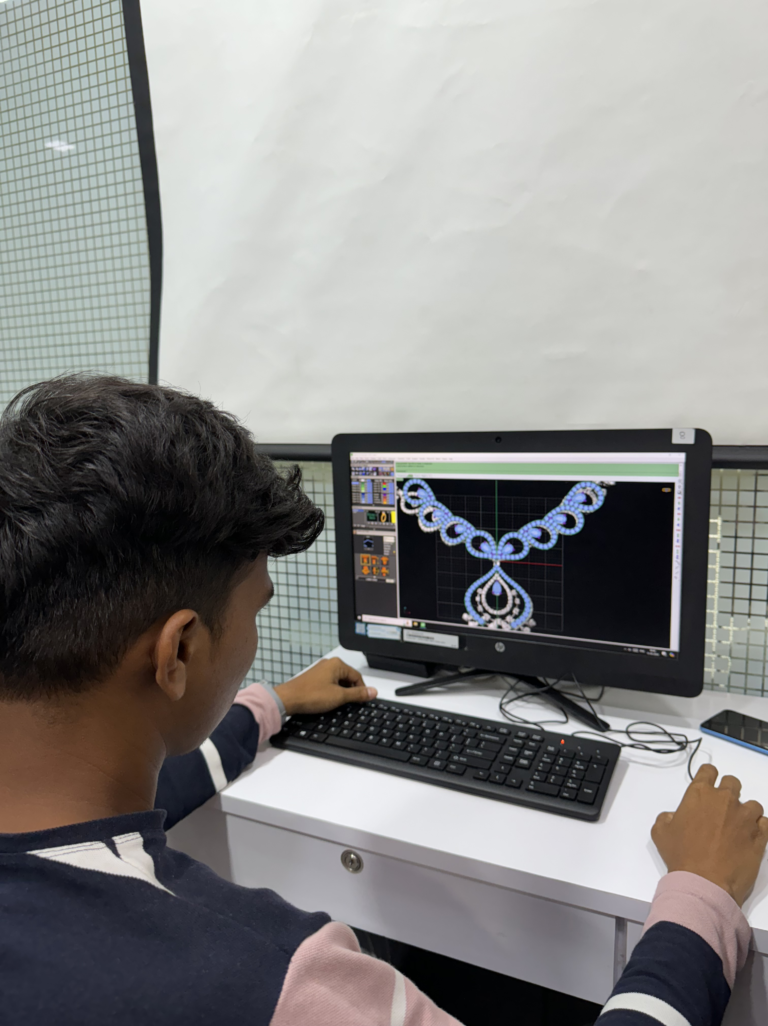Before joining a jewelry design course, it’s important to have a checklist about the topic areas the course should cover. Here’s a look into the essentials that your jewelry design course should provide to you.


Since decades, India’s predominant form of cultural expression has been jewelry. And with every new generation, trends and sentiments change to faithfully convey the collective thoughts of the nation. For these reasons, jewelry designing is one of the most sought-after course and profession by the youth. There are many institutions that teach jewelry designing, but how do you know if the syllabus offered is giving you the most of the experience?
There are certain essentials that a jewelry designing course must educate you in, so that when you venture into the profession, you’re well-adept with certain skills and training to get yourself a head start in the field.
At JK Diamonds Institute of Gems and Jewelry®, there are many such skills that we emphasize and educate our students and prepare them for the competitive market. Let’s breakdown some of those areas of learning below:
1. The Basics of Jewelry Design
In order to perfect your craft in jewelry design, it’s important to first understand the basic rules and inspirations behind jewelry in general.
An in-depth understanding of common jewelry design practices, evergreen trends that repeatedly dominate the seasons etc. sets you on the right path to grasping the art and craft of jewelry design. Technology also plays a major role in helping you experiment and accomplish more with your designs and patterns.
CAD, or Computer-Aided Designs, is a revolutionary technology for the jewelry sector. The software allows you to take your designs to newer and greater heights of complexity, allure and innovation, while maintaining an ease of use and modification. This powerful tool is already extensively used by jewelry businesses and is quickly becoming a mandatory feature in jewelry design training.
If you’re looking to master yourself in CAD design, check out JK Diamonds Institute’s ‘Jewelry Design Graduate – CAD’ course on the website!

2. Understanding Jewelry Design concepts, Materials and Manufacturing
Once you have a basic knowledge and assessment of jewelry design, the next step is to bring your designs to life. This is where a 100% practical study is required in learning about various jewelry concepts, trends, history and different eras of jewelry such as Art Deco, Victorian, etc. Not just that, but an understanding should also be given about the manufacturing techniques of such jewelry.
This technical and hands-on practice comprises of manual training in understanding shapes, forms and temperatures that you’ll be dealing with to create your jewelry designs in a practical manner. Since gold or silver are not the only materials you’ll use for your designs, a brief understanding of other metals and gemstones will also be part of your study.
At JK, each student undergoes an extensive and in-depth training of various gemstones, metals and other materials used in jewelry designs. Knowledge of stones, gems and metals, engraving, polishing, testing of quality and many other techniques are taught, so that by the end of the course, students emerge into the industry with even the minutest details of the jewelry design process.
If you’re interested to learn more about this process, check out JK Institute’s ‘Jewelry Design Graduate – Manual’ course on their website!
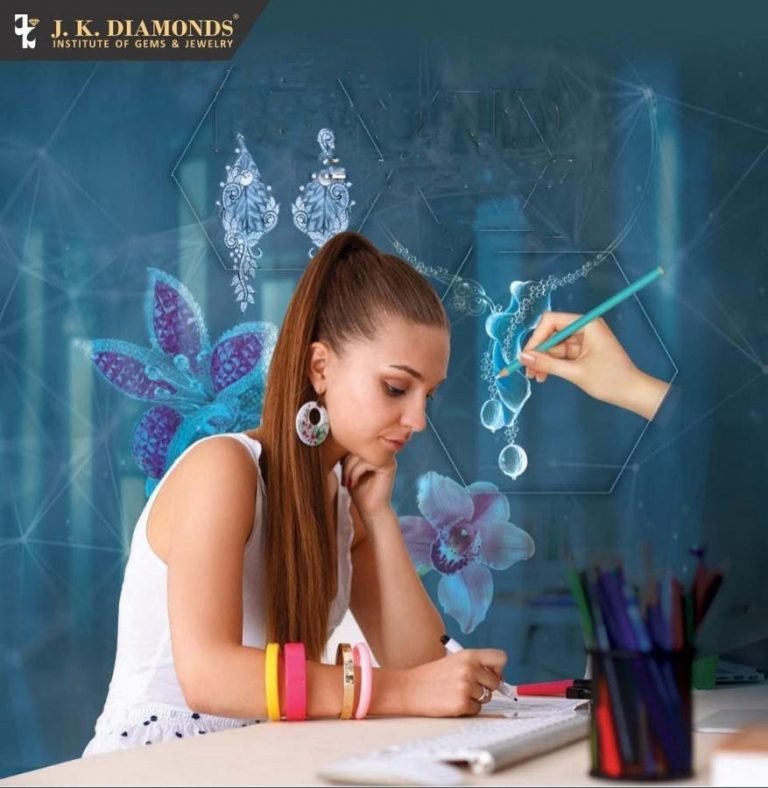
3. Techniques of Jewelry Design
There are a number of ways you can design your jewelry, which is why it’s crucial to have some understanding about how you can turn the idea into a physical reality.
By studying the various styles of techniques that manufacturers and goldsmiths use in jewelry, you broaden your creative horizons vastly, enabling yourself to explore a whole range of designs that are both grounded in reality and shooting for the stars.
4. Getting Your Jewelry Made
The primary focus here is on production. Whether you’re working on the creative or logistics side of the jewelry industry, the knowledge to deal with jewelry manufacturers, import & export houses etc. is a crucial skill to have in the market. Formative information about production strategies, storage, scales of production and more are taught in this section.
5. Portfolio and Marketing
There’s no point in doing the work when you’re not marketing it right. A good portfolio should showcase your talent, potential and uniqueness from the very first glance. Through the course, you not only learn how to design an amazing portfolio, but also the language of the market in order to sell your work to corporations. The level of exposure to these skills greatly depends on the experience of the faculty in the industry.




When breaking into a competitive field, it can seem quite intimidating. Therefore, a strong jewelry background from a leading and market-centric institution opens a number of opportunities for those just starting out in the field. If you’re looking to learn a new skill or advance in a pre-existing one, check out the courses at JK Diamonds Institute of Gems and Jewelry to broaden your jewelry career horizons!

